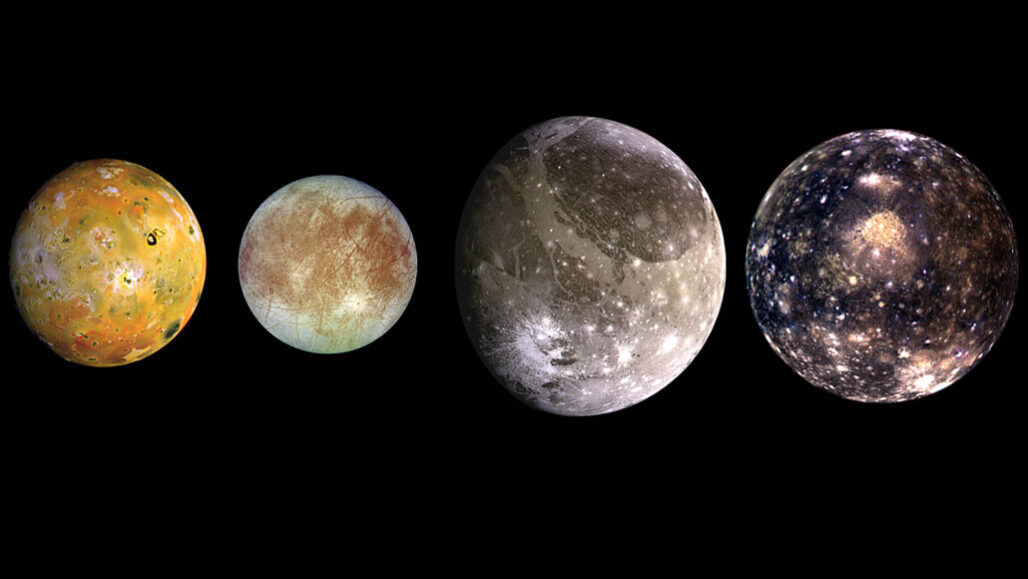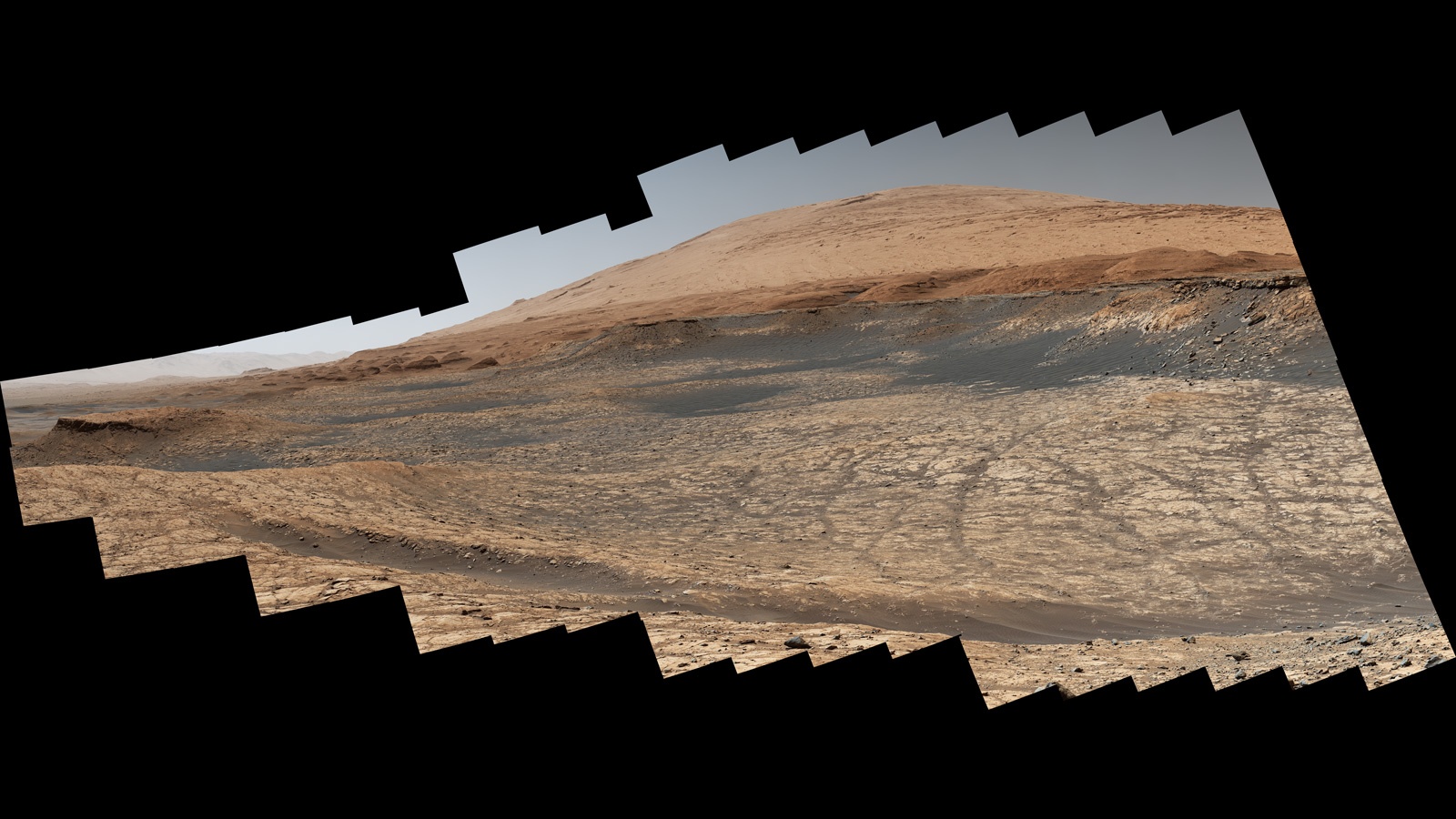The moons of our Solar System have garnered quite a lot of attention in the last few years, especially pertaining to astrobiology and the search for life beyond Earth. From the Galilean moons of Jupiter to the geysers of Enceladus to the methane lakes on Titan, these small worlds continue to humble us with both their awe and mystery. But do the very same scientists who study these mysterious and intriguing worlds have their own favorite moons? As it turns out, seven such planetary geologists were kind enough to share their favorite Solar System moons with Universe Today!
Continue reading “The Favorite Solar System Moons of Planetary Geologists; An In-Depth Discussion”Meteorites are Contaminated Quickly When They Reach Earth
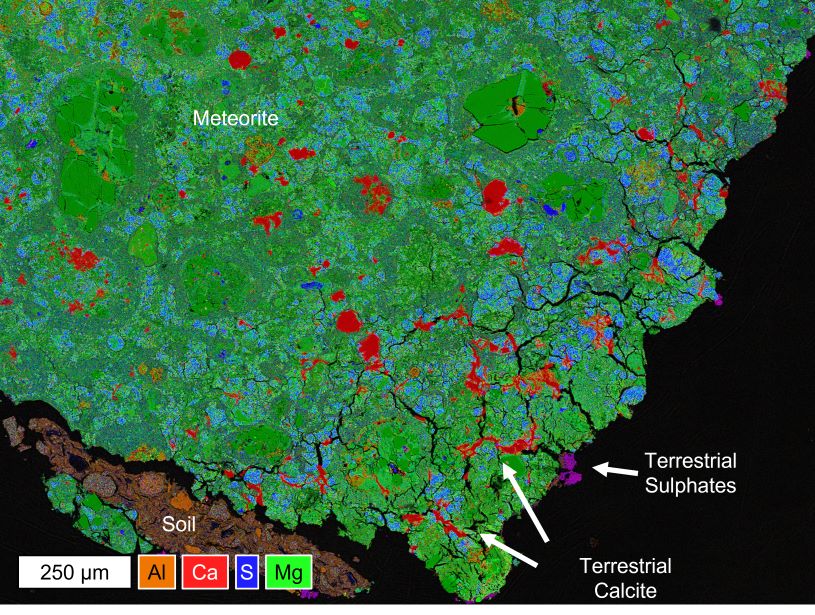
On Earth, geologists study rocks to help better understand the history of our planet. In contrast, planetary geologists study meteorites to help better understand the history of our solar system. While these space rocks put on quite the spectacle when they enter our atmosphere at high speeds, they also offer insights into both the formation and evolution of the solar system and the planetary bodies that encompass it. But what happens as a meteorite traverses our thick atmosphere and lands on the Earth? Does it stay in its pristine condition for scientists to study? How quickly should we contain the meteorite before the many geological processes that make up our planet contaminate the specimen? How does this contamination affect how the meteorite is studied?
Continue reading “Meteorites are Contaminated Quickly When They Reach Earth”Planetary Interiors in TRAPPIST-1 System Could be Affected by Stellar Flares
In a recent study published in The Astrophysical Journal Letters, an international team of researchers led by the University of Cologne in Germany examined how stellar flares and coronal mass ejections (CMEs) erupted by the TRAPPIST-1 star could affect the interior heating of its orbiting exoplanets. This study holds the potential to help us better understand how solar flares affect planetary evolution. The TRAPPIST-1 system is an exolanetary system located approximately 39 light-years from Earth with at least seven potentially rocky exoplanets in orbit around a star that has 12 times less mass than our own Sun. Since the parent star is much smaller than our own Sun, then the the planetary orbits within the TRAPPIST-1 system are much smaller than our own solar system, as well. So, how can this study help us better understand the potential habitability of planets in the TRAPPIST-1 system?
Continue reading “Planetary Interiors in TRAPPIST-1 System Could be Affected by Stellar Flares”Here’s a Strange Rock That Perseverance Shot With its Laser
Perseverance has been busy lately. After testing its systems out, taking the first sound recording ever on the Red Planet, and dropping off its helicopter sidekick, now it has the opportunity to work on its primary mission: stare at some rocks. And occasionally zap them with a laser.
Continue reading “Here’s a Strange Rock That Perseverance Shot With its Laser”Curiosity Is Going To Spend Its Summer Driving Around a Dangerous Sandy Region on Mars
Do road trips actually require roads? Not if you’re NASA’s Curiosity rover, who is embarking on an extended 1 mile long road trip this summer up the side of Mount Sharp.
The rover will be moving between two “units” of Gale Crater, where it has been exploring since 2014. It’s wrapping up experiments in the “clay-bearing unit”, which resulted in the highest concentrations of clay found during the mission. It’s now moving to the “sulfate-bearing unit”, which is expected to contain an abundance of sulfates, such as gypsum and Epsom salts.
Continue reading “Curiosity Is Going To Spend Its Summer Driving Around a Dangerous Sandy Region on Mars”Sad About Pluto? How about 110 Planets in the Solar System Instead?

In 2006, during their 26th General Assembly, the International Astronomical Union (IAU) adopted a formal definition of the term “planet”. This was done in the hopes of dispelling ambiguity over which bodies should be designated as “planets”, an issue that had plagued astronomers ever since they discovered objects beyond the orbit of Neptune that were comparable in size to Pluto.
Needless to say, the definition they adopted resulted in fair degree of controversy from the astronomical community. For this reason, a team of planetary scientists – which includes famed “Pluto defender” Alan Stern – have come together to propose a new meaning for the term “planet”. Based on their geophysical definition, the term would apply to over 100 bodies in the Solar System, including the Moon itself.
The current IAU definition (known as Resolution 5A) states that a planet is defined based on the following criteria:
“(1) A “planet” is a celestial body that (a) is in orbit around the Sun, (b) has sufficient mass for its self-gravity to overcome rigid body forces so that it assumes a hydrostatic equilibrium (nearly round) shape, and (c) has cleared the neighbourhood around its orbit.
(2) A “dwarf planet” is a celestial body that (a) is in orbit around the Sun, (b) has sufficient mass for its self-gravity to overcome rigid body forces so that it assumes a hydrostatic equilibrium (nearly round) shape , (c) has not cleared the neighbourhood around its orbit, and (d) is not a satellite.
(3) All other objects , except satellites, orbiting the Sun shall be referred to collectively as “Small Solar-System Bodies”
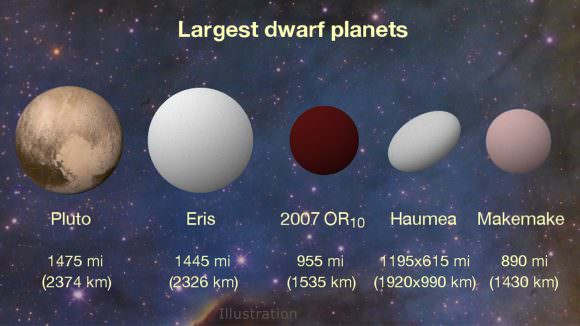
Because of these qualifiers, Pluto was no longer considered a planet, and became known alternately as a “dwarf planet”, Plutiod, Plutino, Trans-Neptunian Object (TNO), or Kuiper Belt Object (KBO). In addition, bodies like Ceres, and newly discovered TNOs like Eris, Haumea, Makemake and the like, were also designated as “dwarf planets”. Naturally, this definition did not sit right with some, not the least of which are planetary geologists.
Led by Kirby Runyon – a final year PhD student from the Department of Earth and Planetary Sciences at Johns Hopkins University – this team includes scientists from the Southwest Research Institute (SwRI) in Boulder, Colorado; the National Optical Astronomy Observatory in Tuscon, Arizona; the Lowell Observatory in Flagstaff, Arizona; and the Department of Physics and Astronomy at George Mason University.
Their study – titled “A Geophysical Planet Definition“, which was recently made available on the Universities Space Research Association (USRA) website – addresses what the team sees as a need for a new definition that takes into account a planet’s geophysical properties. In other words, they believe a planet should be so-designated based on its intrinsic properties, rather than its orbital or extrinsic properties.
From this more basic set of parameters, Runyon and his colleagues have suggested the following definition:
“A planet is a sub-stellar mass body that has never undergone nuclear fusion and that has sufficient self-gravitation to assume a spheroidal shape adequately described by a triaxial ellipsoid regardless of its orbital parameters.”
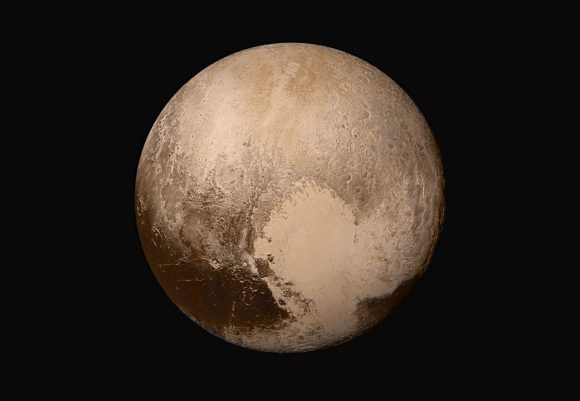
As Runyon told Universe Today in a phone interview, this definition is an attempt to establish something that is useful for all those involved in the study of planetary science, which has always included geologists:
“The IAU definition is useful to planetary astronomers concerned with the orbital properties of bodies in the Solar System, and may capture the essence of what a ‘planet’ is to them. The definition is not useful to planetary geologists. I study landscapes and how landscapes evolve. It also kind of irked me that the IAU took upon itself to define something that geologists use too.
“The way our brain has evolved, we make sense of the universe by classifying things. Nature exists in a continuum, not in discrete boxes. Nevertheless, we as humans need to classify things in order to bring order out of chaos. Having a definition of the word planet that expresses what we think a planet ought to be, is concordant with this desire to bring order out of chaos and understand the universe.”
The new definition also attempts to tackle many of the more sticky aspects of the definition adopted by the IAU. For example, it addresses the issue of whether or not a body orbits the Sun – which does apply to those found orbiting other stars (i.e. exoplanets). In addition, in accordance with this definition, rogue planets that have been ejected from their solar systems are technically not planets as well.
And then there’s the troublesome issue of “neighborhood clearance”. As has been emphasized by many who reject the IAU’s definition, planets like Earth do not satisfy this qualification since new small bodies are constantly injected into planet-crossing orbits – i..e Near-Earth Objects (NEOs). On top of that, this proposed definition seeks to resolve what is arguably one of the most regrettable aspects of the IAU’s 2006 resolution.

“The largest motivation for me personally is: every time I talk about this to the general public, the very next thing people talk about is ‘Pluto is not a planet anymore’,” said Runyon. “People’s interest in a body seems tied to whether or not it has the name ‘planet’ labelled on it. I want to set straight in the mind of the public what a planet is. The IAU definition doesn’t jive with my intuition and I find it doesn’t jive with other people‘s intuition.”
The study was prepared for the upcoming 48th Lunar and Planetary Science Conference. This annual conference – which will be taking place this year from March 20th-24th at the Universities Space Research Association in Houston, Texas – will involve specialists from all over the worlds coming together to share the latest research findings in planetary science.
Here, Runyon and his colleagues hope to present it as part of the Education and Public Engagement Event. It is his hope that through an oversized poster, which is a common education tool at Lunar and Planetary Science Conference, they can show how this new definition will facilitate the study of the Solar System’s many bodies in a way that is more intuitive and inclusive.
“We have chosen to post this in a section of the conference dedicated to education,” he said. “Specifically, I want to influence elementary school teachers, grades K-6, on the definitions that they can teach their students. This is not the first time someone has proposed a definition other than the one proposed by the IAU. But few people have talked about education. They talk among their peers and little progress is made. I wanted to post this in a section to reach teachers.”
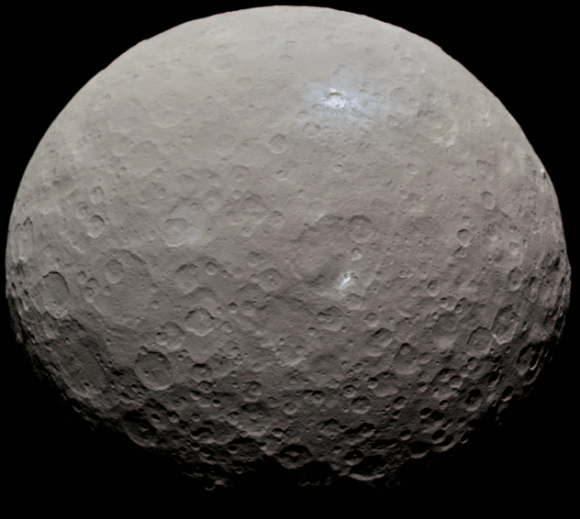
Naturally, there are those who would raise concerns about how this definition could lead to too many planets. If intrinsic property of hydrostatic equilibrium is the only real qualifier, then large bodies like Ganymede, Europa, and the Moon would also be considered planets. Given that this definition would result in a Solar System with 110 “planets”, one has to wonder if perhaps it is too inclusive. However, Runyon is not concerned by these numbers.
“Fifty states is a lot to memorize, 88 constellations is a lot to memorize,” he said. “How many stars are in the sky? Why do we need a memorable number? How does that play into the definition? If you understand the periodic table to be organized based on the number of protons, you don’t need to memorize all the atomic elements. There’s no logic to the IAU definition when they throw around the argument that there are too many planets in the Solar System.”
Since its publication, Runyon has also been asked many times if he intends to submit this proposal to the IAU for official sanction. To this, Runyon has replied simply:
“No. Because the assumption there is that the IAU has a corner on the market on what a definition is. We in the planetary science field don’t need the IAU definition. The definition of words is based partly on how they are used. If [the geophysical definition] is the definition that people use and what teachers teach, it will become the de facto definition, regardless of how the IAU votes in Prague.”
Regardless of where people fall on the IAU’s definition of planet (or the one proposed by Runyon and his colleagues) it is clear that the debate is far from over. Prior to 2006, there was no working definition of the term planet; and new astronomical bodies are being discovered all the time that put our notions of what constitutes a planet to the test. In the end, it is the process of discovery which drives classification schemes, and not the other way around.
Further Reading: USRA
Image Source: Planetary Society
Get That Geologist A Flight Suit!
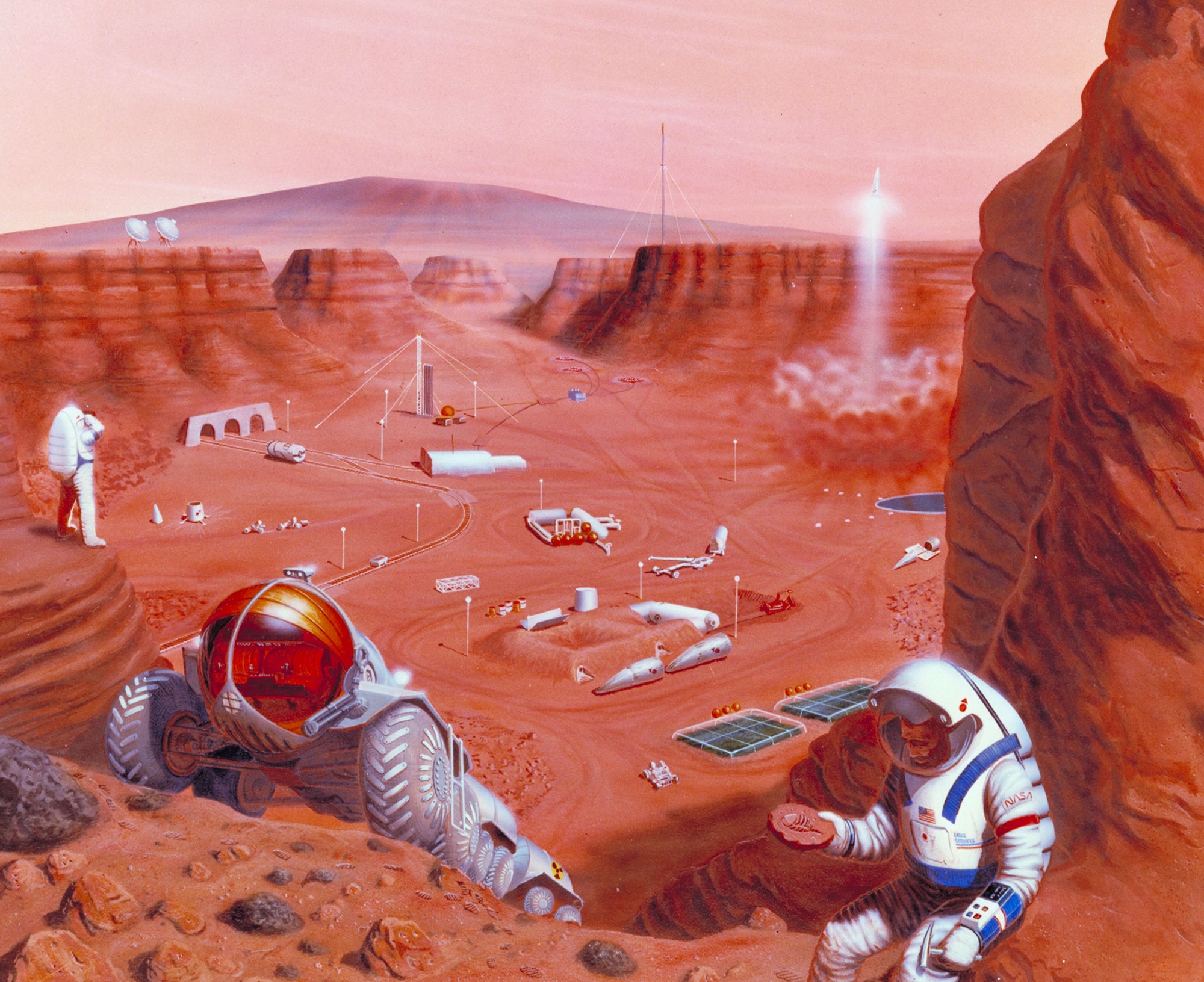
In the coming decades, the world’s largest space agencies all have some rather big plans. Between NASA, the European Space Agency (ESA), Roscosmos, the Indian Space Research Organisation (ISRO), or the China National Space Administration (CNSA), there are plans to return to the Moon, crewed missions to Mars, and crewed missions to Near-Earth Objects (NEOs).
In all cases, geological studies are going to be a major aspect of the mission. For this reason, the ESA recently unveiled a new training program known as the Pangaea course, a study program which focuses on identifying planetary geological features. This program showcases just how important planetary geologists will be to future missions.
Pangaea takes its name from the super-continent that that existed during the late Paleozoic and early Mesozoic eras (300 to 175 million years ago). Due to convection in Earth’s mantle, this continent eventually broke up, giving rise to the seven continents that we are familiar with today.
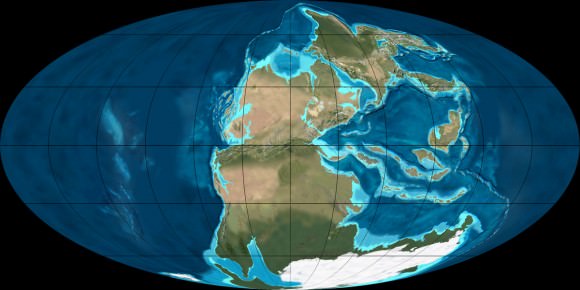
Francesco Sauro – a field geologist, explorer and the designer of the course – explained the purpose of Pangaea in an ESA press release:
“This Pangaea course – named after the ancient supercontinent – will help astronauts to find interesting rock samples as well as to assess the most likely places to find traces of life on other planets. We created a course that enables astronauts on future missions to other planetary bodies to spot the best areas for exploration and the most scientifically interesting rocks to take samples for further analysis by the scientists back on Earth.”
This first part of the course will take place this week, where astronaut trainer Matthias Maurer and astronauts Luca Parmitano and Pedro Duque will be learning from a panel of planetary geology experts. These lessons will include how to recognize certain types of rock, how to draw landscapes, and the exploration of a canyon that has sedimentary features similar to the ones observed in the Murray Buttes region, which was recently imaged by the Curiosity rover.
The geology panel will include such luminaries as Matteo Messironi (a geologist working on the Rosetta and ExoMars missions), Harald Hiesinger (an expert in lunar geology), Anna Maria Fioretti (a meteorite expert), and Nicolas Mangold (a Mars expert currently working with NASA’s Curiosity team).
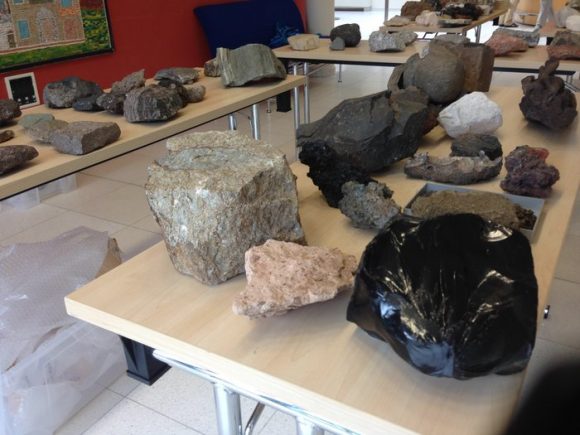
Once this phase of the course is complete, a series of field trips will follow to locations that were chosen because their geological features resemble those of other planets. This will include the town of Bressanone in northeastern Italy, which lies a few kilometers outside of the Brenner Pass (the part of the Alps that lies between Italy and Austria).
In many ways, the Pangaea course picks up where the Cooperative Adventure for Valuing and Exercising Human Behaviour and Performance Skills (CAVES) program left off. For several years now, the ESA has been conducting training missions in underground caverns in order to teach astronauts about working in challenging environments.
This past summer, the latest program involved a team of six international astronauts spending two weeks in a cave network in Sardinia, Italy. In this environment, 800-meters (2625 ft) beneath the surface, the team carried out a series of research and exploration activities designed to recreate aspects of a space expedition.
As the teams explore the caves of Sardinia, they encountered caverns, underground lakes and examples of strange microscopic life – all things they could encounter in extra-terrestrial environments. While doing this, they also get the change to test out new technologies and methods for research and experiments.
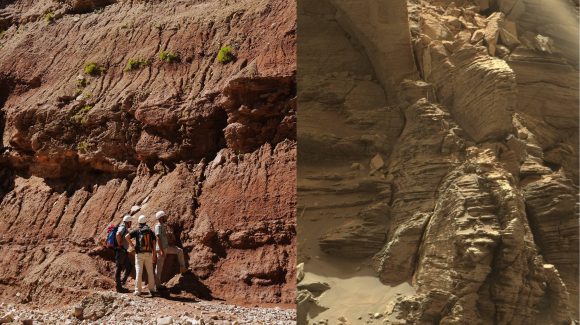
In a way that is similar to expeditions aboard the ISS, the program was designed to teach an international team of astronauts how to address the challenges of living and working in confined spaces. These include limited privacy, less equipment for hygiene and comfort, difficult conditions, variable temperatures and humidity, and extremely difficult emergency evacuation procedures.
Above all, the program attempts to foster teamwork, communication skills, decision-making, problem-solving, and leadership. This program is now an integral part of the ESA’s astronaut training and is conducted once a year. And as project leader Loredana Bessone explained, the Pangaea course fits with the aims of the CAVES program quite well.
“Pangaea complements our CAVES underground training,” she said. “CAVES focuses on team behaviour and operational aspects of a space mission, whereas Pangaea focuses on developing knowledge and skills for planetary geology and astrobiology.”
From all of these efforts, it is clear that the ESA, NASA and other space agencies want to make sure that future generations of astronauts are trained to conduct field geology and will be able to identify targets for scientific research. But of course, understanding the importance planetary geology in space exploration is not exactly a new phenomenon.
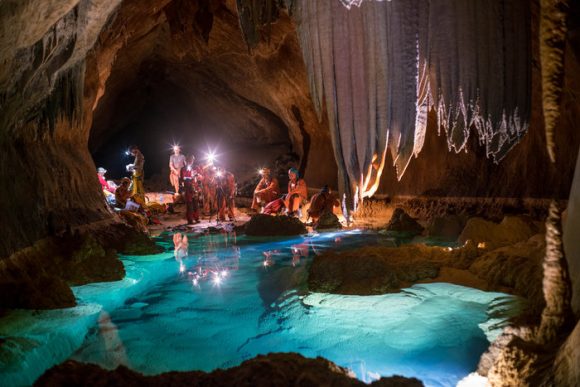
In fact, the study of planetary geology is rooted in the Apollo era, when it became a field separate from other fields of geological research. And geology experts played a very pivotal role when it came to selecting the landing sites of the Apollo missions. As Emily Lakdawalla, the Senior Editor of The Planetary Society (and a geologist herself), told Universe Today in a phone interview:
“The Apollo astronauts received training in field geology before they went to the Moon. Jim Head at Brown University, who was my advisor, was one person who provided that training. Before there were missions, the Lunar Orbiter program returned photos that geologists used to map the surface of the Moon and find good landing sites.”
This tradition is being carried on today with instruments like the Mars Global Surveyor. Before the Spirit and Opportunity rovers were deployed to the Martian surface, NASA scientists studied images taken by this orbiter to determine which potential landing sites would prove to be the valuable for conducting research.
And thanks to the experience gained by the Apollo missions and improvements made in both technology and instrumentation, the process has become much more sophisticated. Compared to the Apollo-era, today’s NASA mission planners have much more detailed information to go on.
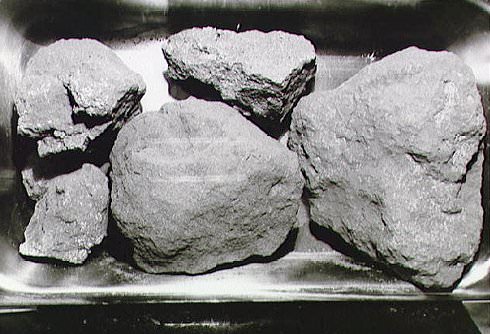
“These days, the orbiter photos have such high resolutions that its just like having aerial photographs, which is something Earth geologists have always used as a tool to scope out an area before going to study it,” Lakdawalla said. “With these photos, we can map out an area in detail before we send a rover, and determine where the most high-value samples will be.”
Looking ahead, everything that’s learned from sending astronauts to the Moon – and from the study of the lunar rocks they brought back – is going to play a vital role when it comes time to explore Mars, go back to the Moon, and investigate NEOs. As Lakdawalla explained, in each case, the purpose of the geological studies will be a bit different.
“The goal in obtaining samples from the Moon was about understanding the chronology of the Moon. The timescale we have developed for the Moon are anchored in the Apollo samples. But we think that the samples have been sampling one major impact – the Imbrium impact. The next Moon samples will attempt to sample other time periods so we can determine if our time scales are correct.”
“On Mars, the questions is, ‘what are the history of water on Mars’. You try to find rocks from orbit that will answer that questions – rocks that have either been altered by water or formed in water. And that is how you select your landing zone.”
And with future missions to NEOs, astronauts will be tasked with examining geological samples which date back to the formation of the Solar System. From this, we are likely to get a better understanding of how our Solar System formed and evolved over the many billion years it has existed.
Clearly, it is a good time to be a geologist, as their expertise will be called upon for future missions to space. Hope they like tang!
New Crater Names Approved for Mercury’s South Pole & More
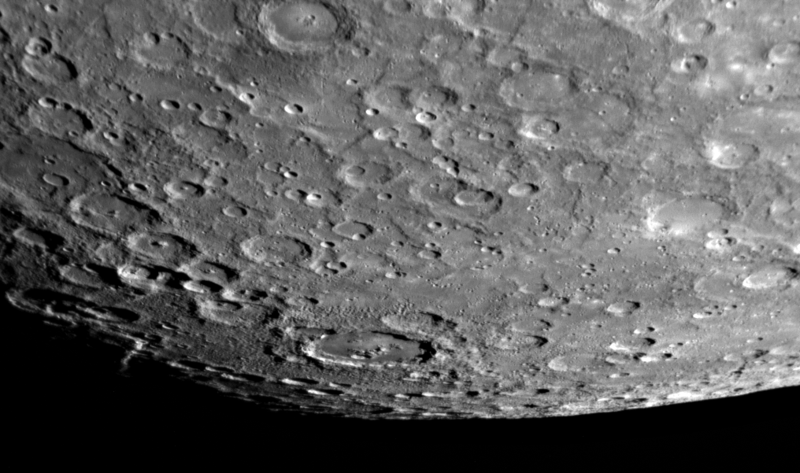
Move over, Tolkien & Tryggvadóttir. Yesterday, an announcement was made that the International Astronomical Union (IAU) approved proposed names for nine new craters on the planet Mercury. The names honor deceased writers, artists and musicians following the convention established by the IAU for naming features on the innermost world.
The announcement comes as NASA’s MESSENGER spacecraft has completed mapping of the surface of Mercury earlier this month. A good majority of these features were established at Mercury’s southern polar region, one of the last areas of the planet to be mapped by MESSENGER.
The craters honored with a newly assigned moniker are:
Donelaitis, named after 18th century Lithuanian poet Kristijonas Donelaitis, author of The Seasons and other tales and fables.
Petofi, named after 19th century Hungarian poet Sandor Petofi, who wrote Nemzeti dal which inspired the Hungarian Revolution of 1848.
Roerich, named after early 20th century Russian philosopher and artist Nicholas Roerich, who created the Roerich Pact of 1935 which asserted the neutrality of scientific, cultural and educational institutions during time of war.
Hurley, named after the 20th century Australian photographer James Francis Hurley, who traveled to Antarctica and served with Australian forces in both World Wars.
Lovecraft, named after 20th century American author H.P. Lovecraft, a pioneer in horror, fantasy and science fiction.
Alver, named after 20th century Estonian author Betti Alver who wrote the 1927 novel Mistress in the Wind.
Flaiano, named after 20th century Italian novelist and screenwriter Ennio Flaiano who was a pioneer Italian cinema and contemporary of Federico Fellini.
Pahinui, named after mid-20th century Hawaiian musician Charles Phillip Kahahawai Pahinui, influential slack-key guitar player and part of the “Hawaiian Renaissance” of island culture in the 1970’s.
L’Engle, named after American author Madeleine L’Engle, who wrote the young adult novels An Acceptable Time, A Swiftly Tilting Planet & A Wind in the Door. L’Engle passed away in 2007.
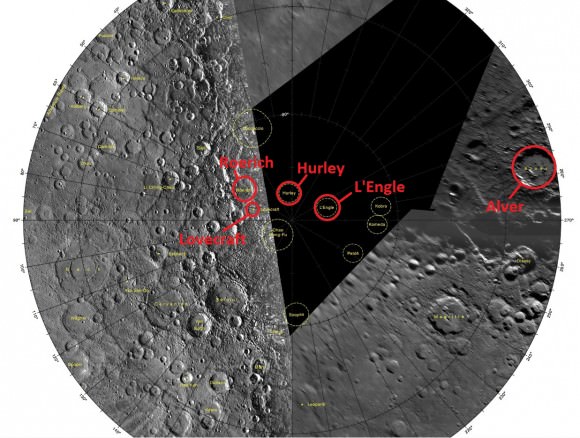
The nine new crater names join 95 others named thus far. The MESSENGER surface mapping campaign has been ongoing since the spacecraft’s first flyby of Mercury in January 2008. MESSENGER entered permanent orbit around world on March 18th, 2011.
MESSENGER missions operations engineer Ray Espiritu was instrumental in getting Pahinui’s name in the running.
“I wanted to honor the place where I grew up and still call home,” Espiritu said. ”The Pahinui crater contains a possible volcanic vent, and its name may inspire other scientists as they investigate the volcanic processes that helped to create Mercury, just as investigation of the Hawaiian volcanoes helps us understand the volcanic processes that shape Earth as we know it today.”
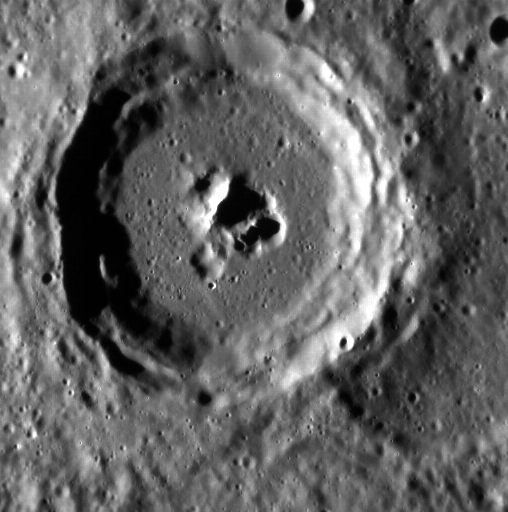
Lovecraft is another interesting selection on the list. The name of the famous horror writer was in the running last month for the naming of Pluto’s moons P4 & P5, and New Horizons principle investigator Alan Stern hinted that Lovecraft may still find a home on a surface feature as New Horizons reveals Pluto & Charon in July 2015. It would be a fitting tribute to a fine writer. Could we end up with Lovecraft marking not only the solar system’s “hubs of hell” on Mercury, but its frozen outer wastelands as well?
There was more news yesterday in the realm of astrogeology and the planet Mercury. The IAU Working Group for Planetary System Nomenclature also made the distinction between features described as valles and catenae on the surface of Mercury. Catenae are described as crater chains, and MESSENGER has sufficient resolution that several valles have been revealed as such. Catenae on Mercury are named after radio astronomy observatories, while valles are named after abandoned cities of antiquity. Thus, Haystack Vallis is now Haystack Catena, Goldstone Vallis is now Goldstone Catena, and Arecibo Vallis is now Arecibo Catena, and, well, you get the idea.
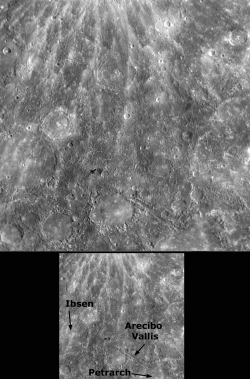
MESSENGER has proven to be a boon for planetary science. The spacecraft was launched in 2004 and took almost 7 years and 6 flyby assists (one past the Earth, two past Venus and three past Mercury) to become the first spacecraft to orbit the tiniest planet in our solar system. Mercury was first seen up close by Mariner 10 in 1974 and even then we only mapped 45% of its surface. Scientists had to wait until MESSENGER to fill in the remainder of Mercury’s map.
The next mission to Mercury isn’t until the planned arrival of the joint ESA/JAXA BepiColombo mission in 2022.
And don’t forget to watch for Mercury as it reaches greatest elongation on Easter Day low in the dawn sky. I managed to catch sight of it low to the east with binoculars for the first time this apparition this morning about 40 minutes prior to local sunrise. It’s amazing to think that ground-based professional telescopes & even amateur astronomers can actually image fuzzy details on the planet’s surface that match up with what MESSENGER is revealing!
All fascinating stuff to contemplate as we welcome the newest named craters to our ever expanding map of Mercury… now, will there ever be a Miskatonic University within the walls of Lovecraft crater?
-Explore these recently named craters and more using the USGS inactive Astrogeology Science Center.
-Also check out this animation of the south polar region of Mercury and more as imaged by MESSENGER.

